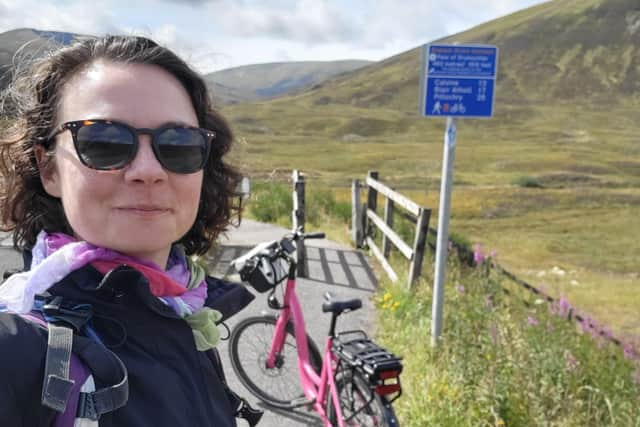Scotland’s promised ‘active freeways’ cycle routes ‘on the back burner’
A network of “active freeways” to encourage people to cycle between Scotland’s town and city centres and outlying areas is “on the back burner” despite ministers’ ambitious target of cutting car use, a new book has claimed.
Cycling journalist Laura Laker wrote in Potholes and Pavements – a Bumpy Ride on Britain’s National Cycle Network (NCN), which is published on May 9: “Things are moving very slowly, if they’re moving at all.
Advertisement
Hide AdAdvertisement
Hide Ad"A network of ‘active freeways‘, rural cycle routes akin to a national cycle network, was announced and then not acted upon.”


Ms Laker also said the NCN across Scotland, which also includes segregated lanes and quieter roads, "is a national piece of infrastructure, only it isn’t prioritised in the same way as the roads.
"Scottish plans for active freeways, interurban high-quality routes, seem to have been placed on the back burner, however, and things are moving very slowly, if they’re moving at all,” she wrote.
The £50 million freeways scheme was announced two years ago as part of the Scottish Government’s latest strategic transport projects review blueprint, to “focus on high-demand travel corridors and on improving connections to communities for which transport exclusion is currently prevalent”.
The strategy said: “They will deliver high-quality, direct and segregated routes for people walking, wheeling and cycling.” Ministers have pledged to cut road traffic by 20 per cent by 2030.
Ms Laker’s concerns come five years after the NCN in Scotland was cut by 40 per cent following a review, when more than 1,000 miles of formerly quiet roads were “reclassified” because of an increase in traffic, vehicle size and speed.
That left them deemed no longer safe for a 12-year-old to cycle unaccompanied – one of the network’s benchmarks – and none of the NCN’s 1,650 miles of routes are west of the Great Glen on the mainland.
Dave du Feu, of the Lothian cycle campaign Spokes, was bemused by the lack of progress.
Advertisement
Hide AdAdvertisement
Hide AdHe said: “Whether or not active freeways are on the back burner, the whole thing has been puzzling from the start. The budget for them was £50m over five years, which is £10m a year. No way would that have gone anywhere near the ambition."
Sustrans, which is funded by the Scottish Government and councils to expand the NCN, said: “We know there is much work still to be done.”
The organisation said in 2023/24 it had helped develop the City Centre West East Link (CCWEL) that opened last month between Roseburn and York Place in Edinburgh, improve surfacing along the Water of Leith pathway in the capital, extend a route at Gourock Station and remove or redesign more than 400 barriers on the NCN.
The body has submitted proposals for this year, but declined to give details until they were confirmed.
A Transport Scotland spokesperson said: “We increased investment in extending and improving the NCN to £18.4 million in 2023/24 and are engaging with Sustrans on their proposals for the 2024/25 programme.
"Through this, we will be supporting a mix of projects that connect towns to cities, villages to towns, as well as some longer-distance rural routes.
“The recent formal opening of CCWEL and the South City Way in Glasgow, currently being further extended, are just two examples of high-quality, inter-urban routes that turn the idea of active freeways into a reality.
“Through this year’s Places for Everyone programme and the recently-launched Active Travel Infrastructure Fund, we expect to see many more projects delivered by local authorities that provide safe, direct routes connecting neighbourhoods and supporting people to make active travel journeys in and out of our urban centres.”
Comments
Want to join the conversation? Please or to comment on this article.